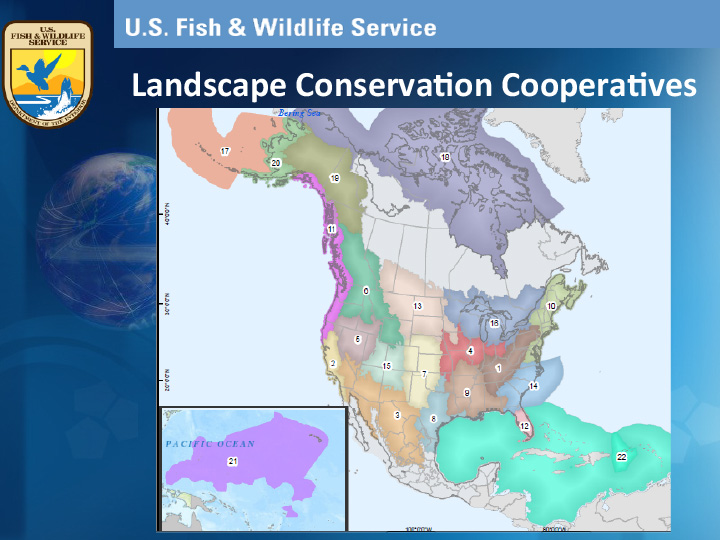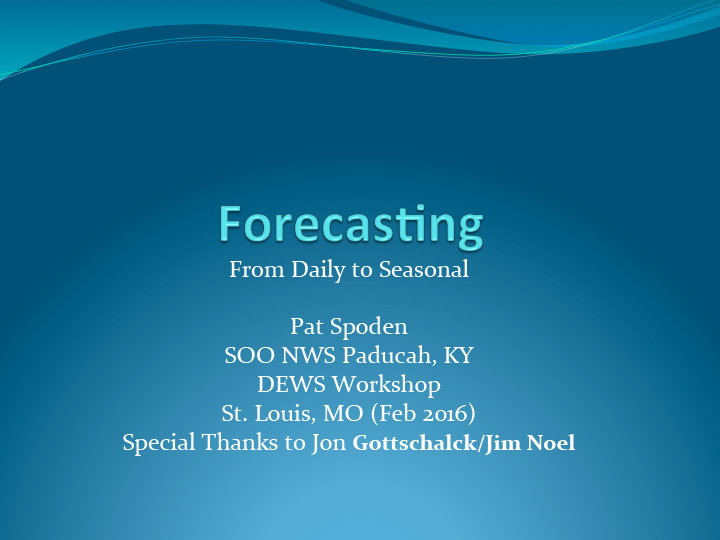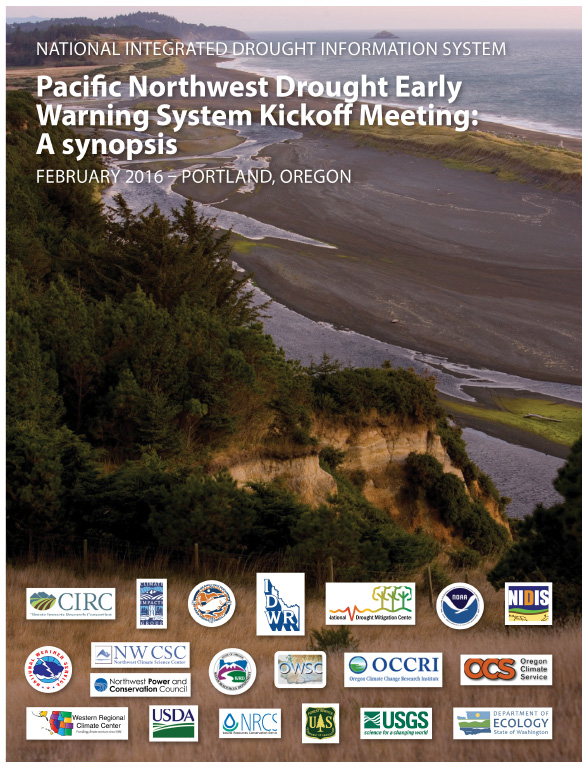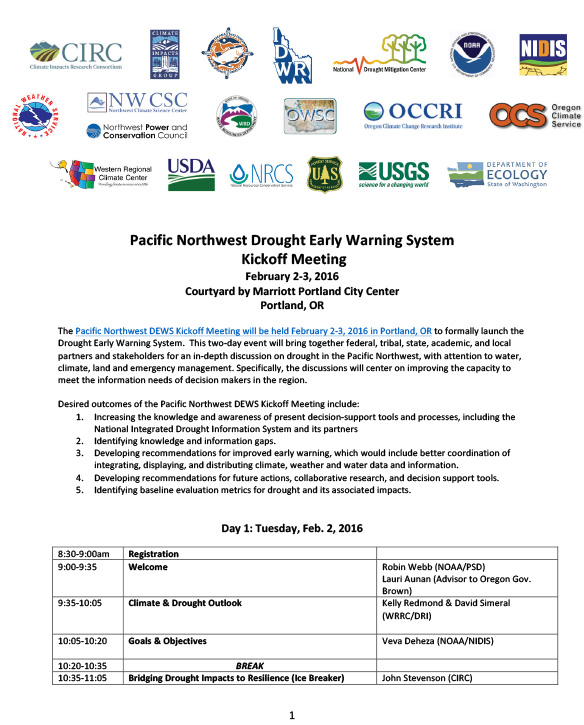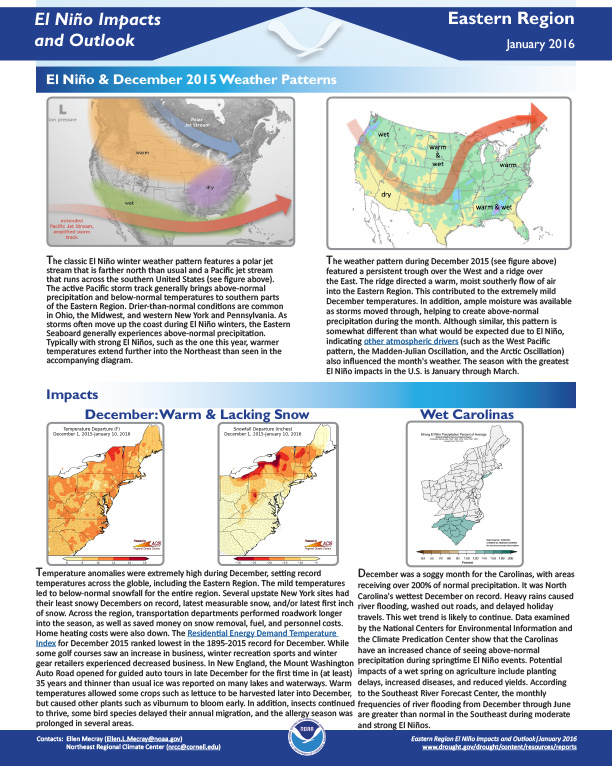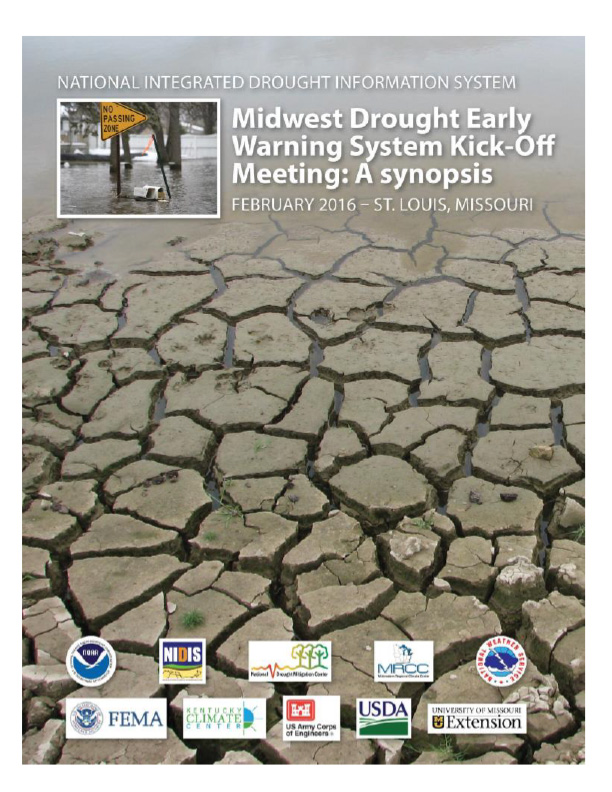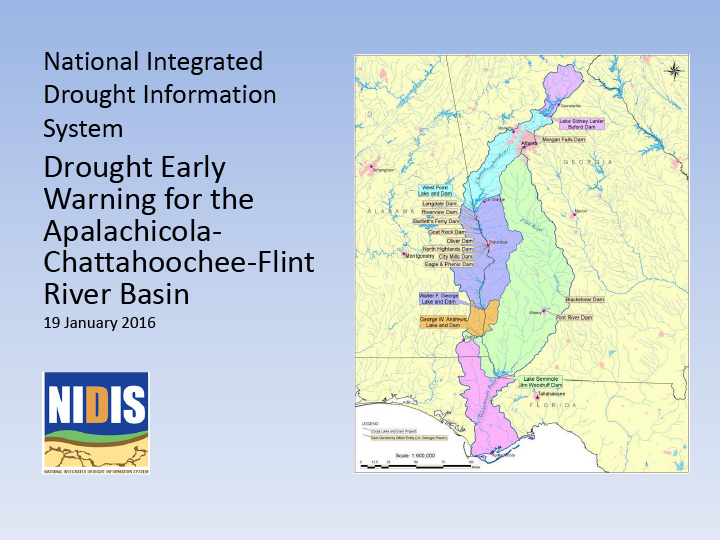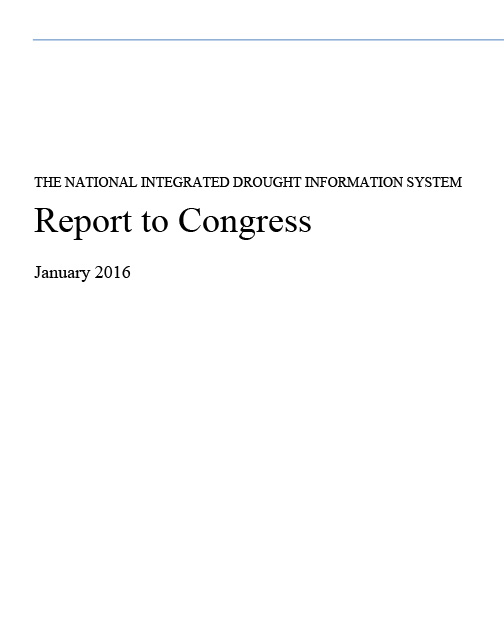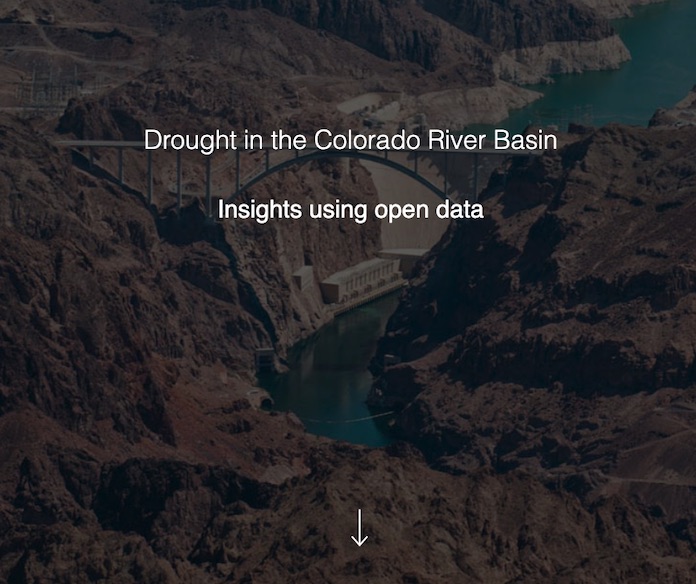How drought affects wildlife.
A presentation given by Pat Spoden, Science and Operations Officer, Paducah, KY Weather Forecast Office, National Weather Service, at the Midwest Climate Outlook and Drought Early Warning System Kickoff Meeting that took place February 9-11, 2016 in St. Louis, Missouri. Discusses components of weather forecasting both in the short and long-term outlooks.
In response to the potential for drought in the Pacific Northwest, NIDIS and its partners launched the Pacific Northwest Drought Early Warning System (DEWS) in February 2016. This document describes the evolution of the DEWS, the kickoff meeting and findings, and potential future activities.
Agenda, speakers and goals for PNW DEWS Kickoff.
El Nino Impacts and Outlook – Eastern Region January 2016.
This report documents the Midwest Drought Early Warning System Kickoff Meeting, held February 9-11, 2016 in St. Louis, MO, to formally launch the Midwest DEWS. The multi-day event brought together federal, state, local, private industry and academic partners and other stakeholders for an in-depth discussion on drought and high-precipitation events in the Midwest, with attention to water, climate, land resources and emergency management. Discussions centered on improving the capacity to meet the early warning information needs of decision makers in the Midwest.
ACF Drought Webinar briefing slides from January 19, 2016. Presentations include
Drought conditions & outlook – Eric Reutebuch, AU Streamflows and groundwater – Paul Ankcorn, USGS Streamflow forecasts – Jeff Dobur, SERFCSummary of NIDIS activities since its authorization in 2006. Includes:
Since 2000, the Colorado River basin has been experiencing a historic, extended drought that has impacted regional water supply and other resources, such as hydropower, recreation, and ecological goods and services. During this time, the Basin has experienced its lowest 16-year period of inflow in over 100 years of record keeping, and reservoir storage in the Colorado River system has declined from nearly full to about half of capacity.
Significant events; temperature, precipitation and drought data, regional impacts for Sept.-Nov. 2015 for the West with Jan-Feb_March outlook for 2016.


